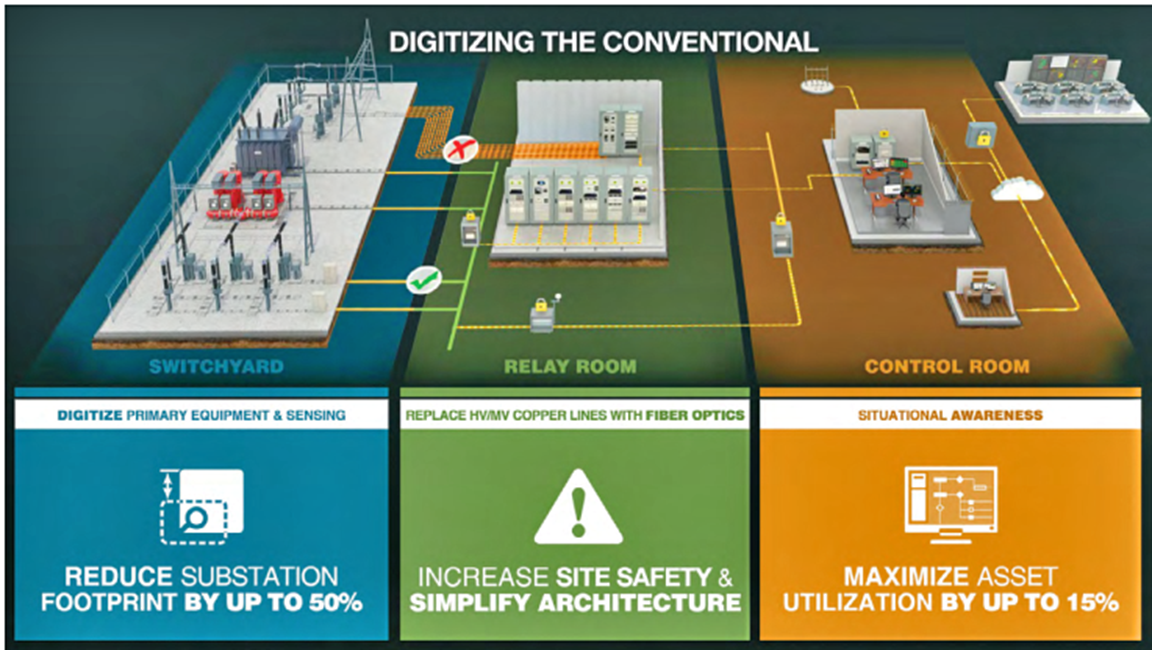Tan Phu Trung - EVNHCMC’S first digital substation
16:52, 13/06/2022
Tan Phu Trung substation features 2 bays for the 110kV line to Cau Bong 500kV substation, 1 bay housing a 110kV side 63MVA transformer, and another bay for the future 110kV side T1-63MVA-110kV transformer. The 22kV side distribution system utilizes a circuit breaker-sectionalized busbar system with distribution boards (DB) installed within the control building. The first section uses 13 DBs (including 8 for 22kV output lines), while the second section is reserved for the future installation of 13 other DBs.
The project deploys digital technology in data collection for operation, monitoring and control, which lowers the requirements for conventional secondary circuits, improving system reliability, and providing further interoperability in the increasingly digitalized industry. Notably, Tan Phu Trung 110kV substation is EVNHCMC’s first project to pilot the PROCESS BUS digital substation technology from the get-go. The project is expected to be completed by the end of 2022 and will supply Tan Phu Trung industrial park in Cu Chi district, Ho Chi Minh City.

Figure 1: The digital substation concept
Main advantages of digital substations:
- In conventional substations, the transfer of data (measurement, protection, control, signal) between outdoor equipment and protection control boards is facilitated through the copper cables of secondary circuits. These are replaced with fiber optic cables in digital substations, providing much higher transmission speed and data fidelity.
- The use of fiber optic cables also lowers the risk of short circuits and current leakage in operation, thus increasing electrical safety and power supply reliability.
- Data transmission between the outdoor switchyard and control building is completely digitalized, which involves only a few fiber core threads instead of thousands of copper wires. This translates to lower requirements for copper cables, smaller cable pits, and lower labor needs for installation and maintenance.
- Digitalized data also eases up and lessen the time required for integrating secondary circuits when the station undergoes upscales or repairs. Complete system checks from I/O to protection and control, including for the SCADA system, are also much simpler and can be performed on one bay while the remaining bays for other lines are still active.
- Transmission control is easier with digital signals. Moreover, digital monitoring linkages between bays remove direct signal interferences from secondary circuits of copper cables.
- The deployment of digital substation technology within the digitalization landscape of the industry will lower operating costs in the long run.

Figure 2: Advantages of the digital substation
PV
Share